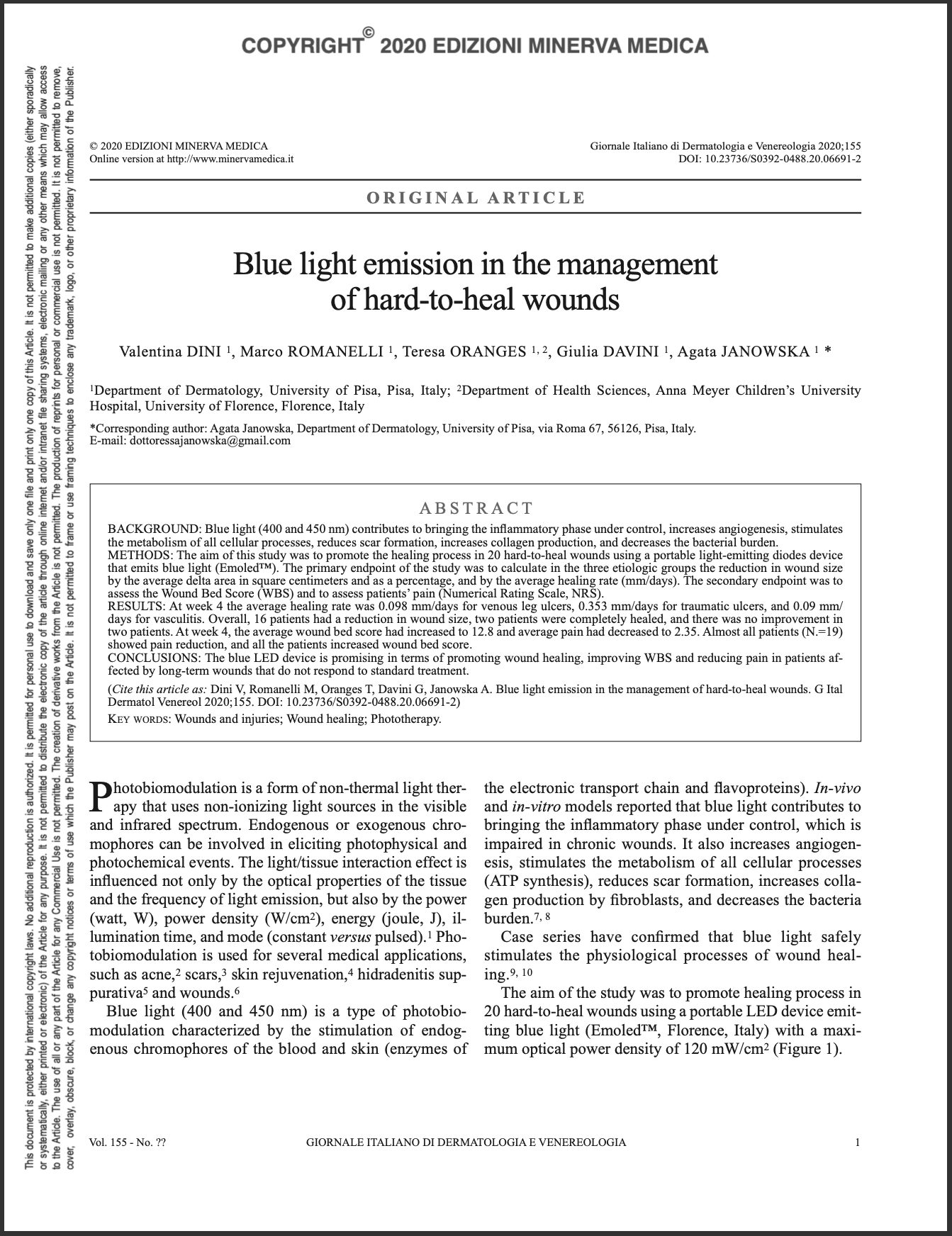
Blue light in the management of hard-to-heal wounds
Autori: Dini V, Romanelli M, Oranges T, Davini G, Janowska A
Titolo: Blue Light emission in the management of hard-to-heal wounds
Anno: 2020
Pubblicazione: Ital J Dermatol Venerol. 2021 Dec;156(6):709-713. DOI: http://10.23736/S2784-8671.20.06691-2
SUMMARY
The aim of the study was to promote the healing process in 20 hard-to-heal wounds using Photobiomodulution with Blue Light. The enrolled patients presented with venous leg ulcers (12), cutaneous small vessel vasculitis (6), and two traumatic ulcers (2), not responding to the standard treatment.
Venous and traumatic ulcers were treated for 60 seconds once a week. Vasculitis were treated for 120 seconds twice a week. All the patients were treated for a maximum period of 4 weeks. Dressings were changed twice a week with standard dressings based on the Wound Bed Preparation. The primary endpoint of the study was to calculate the wound size reduction. The secondary endpoint was to assess the wound bed and the characteristics of the perilesional skin with the Wound Bed Score (WBS) and to evaluate patients’ pain with the Numerical Rating Scale (NRS).
Overall, after 4 weeks of treatment, 16 patients showed a reduction of the wound’s size, two patients were completely healed, and two patients did not improve in terms of area reduction. In particular, venous ulcers decreased on average by 3.14 cm2 (36%), traumatic ulcers by 8.15 cm2 (60%9) and vasculitis by 1.01 cm2 (12.3%). Almost all the patients (19) showed NRS reduction, and all the patients increased their WBS. No adverse events were reported during the study. Overall, after one month from treatment, nine ulcers were completely healed (4 venous leg ulcers, 2 traumatic wounds, 3 vasculitis)
According to the Authors, based on these preliminary results, the Blue LED light therapy is promising in terms of promoting wound healing, improving WBS and reducing pain in patients affected by long-term wounds that do not respond to standard treatment.

